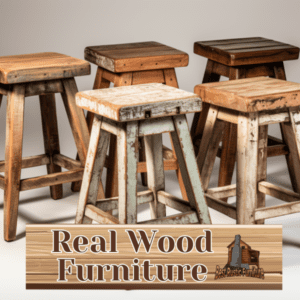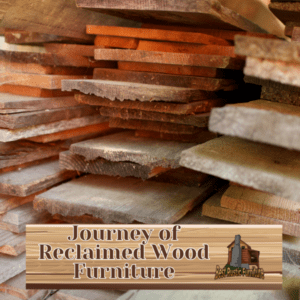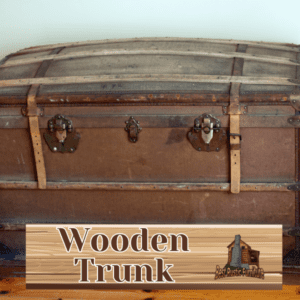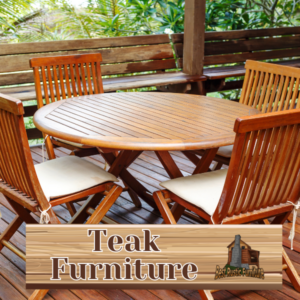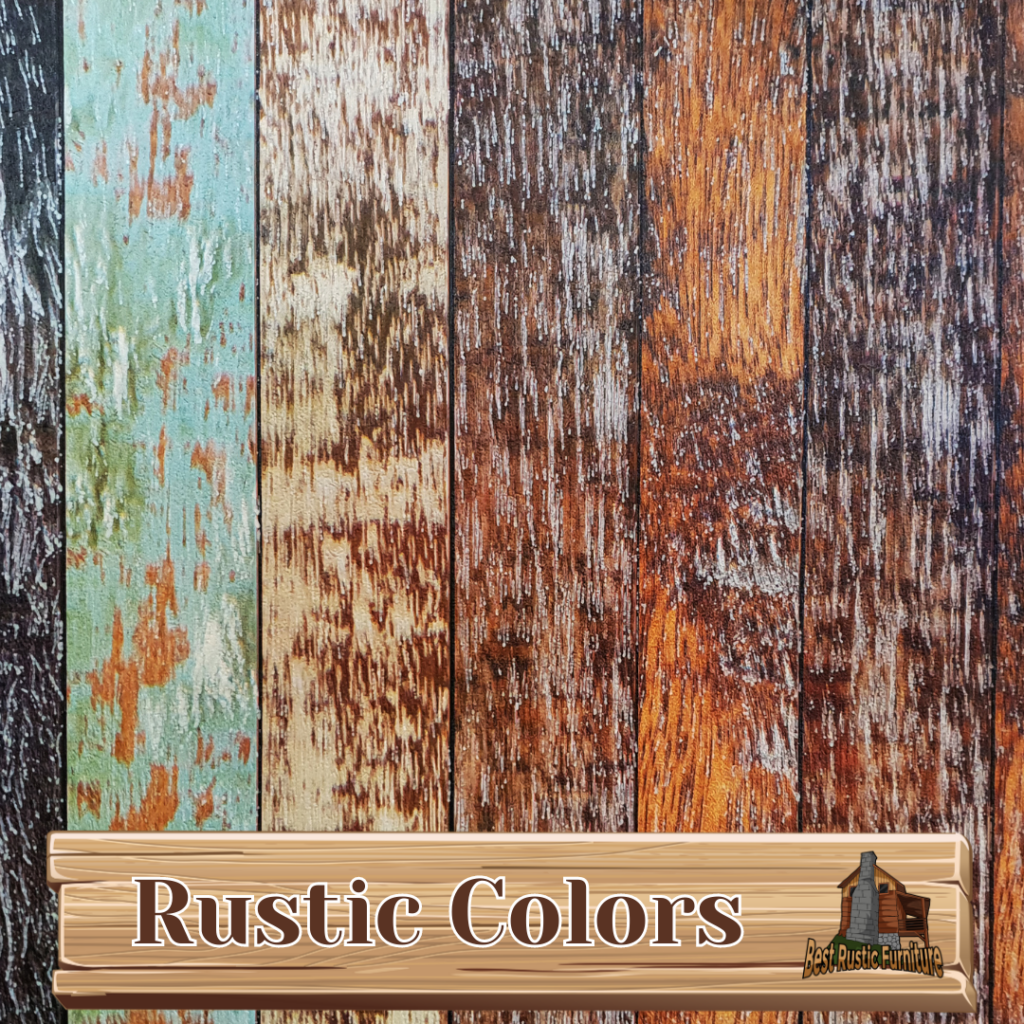
Rustic interior designs exude warmth, coziness, and a connection to nature. Choosing the right color palette is essential to elevate and enhance these rustic aesthetics. By selecting colors that perfectly complement the rustic elements, you can create a harmonious and inviting space. Here’s what you need to know about color palettes that elevate rustic interior designs.
Firstly, understanding the importance of choosing the right color palette is crucial. The colors you choose can significantly impact the overall atmosphere and feel of the space. In rustic interior designs, the goal is to create a natural, earthy, and inviting environment. The color palette should reflect these characteristics, enhancing the rustic charm and bringing the design elements together.
To create an effective color palette for rustic interior designs, it’s essential to consider what makes a palette work well in this style. Rustic designs focus on natural materials, textures, and warmth. The colors should align with these elements, creating a cohesive and visually pleasing space.
When it comes to specific color palettes that complement rustic interior designs, there are several options to explore. Earthy tones like warm browns, rich reds, burnt oranges, and deep yellows can bring a sense of nature indoors. Neutral colors such as beige, cream, and gray provide a versatile backdrop and allow other design elements to shine. Warm color schemes featuring shades of reds, oranges, and yellows exude coziness and warmth. Natural greens and blues can be incorporated to add a touch of freshness and tranquility to the space.
Choosing the right color palette for your rustic interior design involves considering factors such as the room’s lighting, existing furnishings, and creating a cohesive flow between rooms. It’s important to select colors that harmonize with the lighting conditions to achieve the desired ambiance. Working with existing furnishings and decor helps create a unified look. Creating a flow between rooms can be achieved by using similar colors or complementary hues to ensure a seamless transition.
Lastly, using your chosen color palette effectively in rustic interior designs can be achieved through various techniques. Creating accent walls with bolder colors can add depth and visual interest. Incorporating bold colors in small elements, such as pillows or art pieces, can add pops of color without overwhelming the space. Using complementary colors can create a stunning visual impact, balancing warm and cool tones.
By understanding the significance of color palettes in rustic interior designs and following these tips, you can create a beautiful and inviting space that embraces the charm of nature and rustic aesthetics.
Key takeaways:
- Earthy tones enhance the rustic charm: Colors like warm browns, deep oranges, and muted greens evoke a natural and cozy feel, perfect for rustic interior designs.
- Neutral colors create a timeless backdrop: Shades of beige, gray, and white provide a versatile canvas for rustic design elements, allowing them to take center stage.
- Combining warm color schemes adds depth: Layering warm hues like reds, yellows, and rusty tones brings a sense of depth and richness to rustic interiors, making them feel inviting and comfortable.
Importance of Choosing the Right Color Palette
Choosing the right color palette is of utmost importance when it comes to creating a cohesive and harmonious rustic interior design. It plays a vital role in setting the desired mood, defining the space, and evoking the desired emotions. Therefore, considering the following factors becomes crucial in selecting a color palette:
- Style and theme: It is essential to choose colors that align with the overall theme and style of the rustic design.
- Lighting: Taking into account the natural and artificial lighting in the space ensures that the colors appear as intended.
- Contrast and balance: To create visual interest, it is recommended to pair contrasting colors while maintaining a balanced look.
- Texture and materials: Considering the texture and materials used in the space helps determine colors that will complement them.
To illustrate the significance of choosing the right color palette, let’s take the example of a couple who wanted to create a cozy cabin feel for their mountain retreat. They wisely opted for a warm color palette consisting of earthy browns, deep greens, and rich reds. As a result, they achieved a rustic interior that beautifully reflected the natural surroundings and created a warm and inviting atmosphere.
What Makes a Color Palette Effective in Rustic Interior Designs?
What Makes a Color Palette Effective in Rustic Interior Designs?
To create an effective color palette for rustic interior designs, it is important to take into consideration several factors. One of the key elements is the use of natural colors and earthy tones, which are essential in capturing the rustic feel. Warm browns, muted greens, and soft neutrals are examples of these colors that help create a cozy and inviting atmosphere. Additionally, textures play a significant role in rustic design, and it is important for the color palette to enhance the visual and tactile textures present in the space. Moreover, the lighting of the room should also be taken into account when choosing colors, as natural light can accentuate certain hues. By considering all these elements, a color palette can effectively enhance the rustic aesthetic in interior designs.
Key Elements of Rustic Interior Designs
Discover the essential elements that bring rustic interior designs to life. From the use of natural materials to creating texture-rich environments, we’ll explore the key components that make rustic interiors so inviting. Get ready to embrace warmth and craftsmanship as we delve into the world of rustic interior design.
1. Natural Materials
Natural materials play a crucial role in creating an authentic and rustic interior design aesthetic. These materials infuse warmth, texture, and a genuine connection with nature into the space. In a rustic interior design, various key natural materials are commonly utilized, and they include:
- Wood: Whether it’s reclaimed, distressed, or unfinished, incorporating wooden elements brings about a captivating rustic charm.
- Stone: Stone features, such as exposed brick walls or surrounds for fireplaces, contribute to the rustic ambiance of the space with their earthy feel.
- Leather: Adding leather furniture or accessories like poufs and cushions provides a rugged and authentic touch to the design.
- Natural fibers: To introduce organic textures, materials like jute, sisal, or wool rugs, linen or cotton curtains, and woven baskets are often incorporated.
- Metal: By including metal elements like wrought iron or rustic metals in light fixtures, hardware, or decor items, an industrial touch can be infused into the overall rustic design.
2. Textures
Incorporating textures is an essential aspect of rustic interior designs. It not only adds depth but also enhances visual interest to the space. Here are several ways to naturally introduce textures:
- Wood: Embrace the use of reclaimed or distressed wood for flooring, furniture, and accent pieces.
- Stone: Seamlessly incorporate elements of natural stone such as fireplace surrounds or exposed stone walls.
- Fabrics: Opt for cozy and textured fabrics like wool, flannel, or burlap for upholstery, curtains, and throws.
- Metal: Introduce metal accents such as wrought iron or copper for light fixtures, hardware, and decorative pieces.
3. Warmth
Warmth is a crucial element in the creation of a cozy and welcoming atmosphere within rustic interior designs. To achieve a sense of warmth in your space, it is important to consider the following factors:
– Utilize natural materials like wood and stone, as they contribute to the rustic charm that is associated with warmth in interior design.
– Incorporate textured elements such as exposed beams or a textured accent wall to add depth and interest to the space.
– Opt for warm color schemes, such as earth tones or rich, deep hues, as they evoke a feeling of coziness and comfort. For inspiration on color palettes that elevate rustic interior designs, check out Color Palettes that Elevate Rustic Interior Designs.
– Enhance the natural ambiance by adding touches of green and blue, which bring in a sense of nature and tranquility.
To further enhance the warmth in your rustic interior design, consider implementing soft lighting techniques and integrating warm textiles like cozy blankets and rugs.
Color Palettes that Complement Rustic Interior Designs
Discover a world of stunning color palettes that perfectly complement rustic interior designs. From earthy tones to warm color schemes, and natural greens to soothing blues, these sub-sections will take you on a journey through the captivating hues that breathe life into rustic spaces. With each sub-section, explore the unique charm and character that these colors bring, transforming your home into a cozy haven that reflects nature’s beauty. Get ready to elevate your rustic interior design with these exquisite color palettes!
1. Earthy Tones
Earthy tones are a fundamental element of rustic interior design, lending a welcoming and cozy ambiance. These colors draw inspiration from nature, encompassing various shades of brown, tan, beige, and green. Integrating earthy tones into your color palette is a surefire way to enhance the rustic feel of your space. Here are some suggestions on how to seamlessly incorporate earthy tones into your rustic interior design:
- Furniture and flooring can be adorned with rich brown tones.
- Add a touch of nature with plants and other organic elements, introducing pops of green.
- Opt for warm beige or tan hues when selecting wall paint or wallpaper.
- Choose natural wood finishes, particularly in darker shades, for an authentic rustic appeal.
By employing earthy tones in your rustic interior design, you can fashion a harmonious and inviting space that truly captures the beauty of the great outdoors.
2. Neutral Colors
Neutral colors play a vital role in achieving a rustic interior design aesthetic. They are essential in creating a calming and timeless atmosphere in a space while allowing other elements to shine. When selecting a neutral color palette for a rustic interior, it is important to consider incorporating shades of beige, taupe, gray, and cream. These colors offer a versatile backdrop that perfectly complements the natural textures and materials found in rustic designs. Furthermore, neutral colors provide flexibility in terms of decor choices as they effortlessly pair with both warm and cool tones. By incorporating neutral colors into a rustic interior design, you can ensure a harmonious and inviting ambiance.
3. Warm Color Schemes
Warm color schemes are crucial for creating a cozy and inviting atmosphere in rustic interior designs. Here is a compilation of warm color schemes that perfectly complement this style:
- Earthy Tones: Embrace shades of brown, beige, and terracotta to evoke a warm and earthy ambiance.
- Cream and Gold: Combine creamy whites with touches of gold to add an elegant and warm touch.
- Rustic Reds: Deep reds and burgundy hues infuse the space with warmth and depth.
- Autumnal Hues: Bring a cozy autumnal charm to the room with warm oranges, yellows, and burnt siennas.
By incorporating these warm color schemes through wall paint, furniture, and decor, you can effortlessly create a rustic interior design that feels inviting and comforting.
4. Natural Greens and Blues
To create a calming and refreshing atmosphere in a rustic interior design, it is essential to incorporate natural greens and blues. There are several ways to introduce these colors:
- Enhance the space with natural accents like green plants and foliage.
- Add blue elements such as artwork, pillows, or curtains.
- Choose furniture or accessories that are made of reclaimed wood or natural materials with undertones of green or blue.
- Create a focal point by using wallpaper or wall paint in shades of green or blue.
However, it is important to maintain a balance and avoid overwhelming the space with these colors. Instead, opt for subtle hints of natural greens and blues that will enhance the rustic feel without overpowering the overall design.
How to Choose the Right Color Palette for Your Rustic Interior Design
When it comes to creating the perfect rustic interior design, choosing the right color palette is essential. In this section, we’ll uncover the secrets of selecting the perfect colors that will elevate your rustic living spaces to a whole new level. We’ll dive into key factors like the room’s lighting, working with existing furnishings and decor, and creating a seamless flow between rooms. Get ready to transform your space with the power of color!
Considering the Room’s Lighting
Considering the room’s lighting is crucial when choosing the right color palette for rustic interior designs. Here are some factors to consider:
- When considering the room’s lighting, take into account the direction and intensity of natural light in the room. If there is plenty of natural light, you can opt for warmer color palettes to enhance the cozy and inviting atmosphere.
- Artificial lighting also plays a role in color selection. Consider the type of artificial lighting used in the room. Different light bulbs can cast different tones, so make sure to test how the colors will appear under both natural and artificial lighting.
- The purpose of the room and how lighting affects it are important factors. For example, in a bedroom where relaxation is key, considering the room’s lighting can help create a calming ambiance with a color palette featuring softer and cooler tones.
By considering the room’s lighting, you can choose a color palette that enhances the rustic charm and creates the desired atmosphere in your space.
Working with Existing Furnishings and Decor
Working with existing furnishings and decor in rustic interior design can be a fun and creative process. Incorporating your existing pieces seamlessly into your rustic space can be accomplished by following these tips:
- Evaluate: Begin by taking stock of what you already have and determine if any pieces can be repurposed or refurbished to fit the rustic aesthetic.
- Blend styles: Find inventive ways to blend your existing furnishings with rustic elements, such as combining modern chairs with a vintage farmhouse table.
- Accessorize: Enhance your existing decor by adding rustic accessories like woven baskets, vintage signage, or reclaimed wood accents. This will help tie the rustic theme together.
- Color coordination: Consider the color palette of your current furnishings and select rustic elements that harmonize or contrast with them seamlessly.
- Repurpose: Let your creativity shine by repurposing items. For example, transform an old ladder into a bookshelf or repurpose vintage crates into unique storage units.
Let me share a true story with you: A friend of mine fell in love with a modern sofa that she wanted to incorporate into her rustic-themed living room. To achieve this, she added rustic throw pillows, draped a cozy plaid blanket over the back, and used a vintage wooden trunk as a coffee table. The result was a truly distinct and welcoming space that perfectly reflected her personal taste.
Creating a Cohesive Flow Between Rooms
To achieve a harmonious connection between the rooms in your rustic interior design, it is important to consider several key factors. Firstly, when choosing your color palette, opt for earthy tones, neutral colors, warm color schemes, and naturally-inspired greens and blues that complement the rustic style present throughout your entire home. Secondly, ensure a smooth transition by incorporating similar textures and materials across different spaces. For instance, using reclaimed wood or stone in various rooms can help create a cohesive flow. Lastly, maintain a consistent level of warmth throughout your home, whether through well-placed lighting, textiles, or a cozy fireplace. By implementing these guidelines, your rustic interior design will seamlessly tie together, creating a cohesive flow between rooms.
Tips for Using Color Palette in Rustic Interior Designs
When it comes to rustic interior designs, using the right color palette can make all the difference. In this section, we’ll dive into some valuable tips that will help you master the art of using color palettes in your rustic interiors. From creating striking accent walls to incorporating bold colors in small elements and exploring the magic of complementary colors, we’ll show you how to bring warmth, charm, and visual harmony to your rustic spaces. Get ready to transform your home with the perfect blend of colors!
1. Creating Accent Walls
- To create accent walls in rustic interior designs, follow these steps:
- Choose a focal point: Select a wall that will draw attention and enhance the design theme of creating accent walls.
- Select a color: Opt for a bold shade that complements the overall color palette while adding visual interest to the accent wall.
- Add texture: Incorporate natural materials like reclaimed wood or stone to create a rustic feel on the accent wall.
- Consider patterns: Introduce patterned wallpaper or stencils on the accent wall to create depth and dimension.
- Balance with the rest of the space: Ensure that the accent wall harmonizes with the surrounding elements and doesn’t overpower the room’s rustic interior design.
Pro-tip: To further enhance the accent wall, incorporate lighting fixtures or artwork to highlight its features and create a focal point in the room.
2. Incorporating Bold Colors in Small Elements
When it comes to rustic interior designs, incorporating bold colors in small elements can really make a statement. Here are some tips:
- Choose vibrant colors that complement the overall color palette of the space. This will help the bold elements blend seamlessly with the rest of the design.
- Utilize bold colors on small decor pieces like throw pillows, artwork, or vases. These elements will serve as eye-catching focal points.
- Create a focal point by painting a bold accent wall or introducing a colorful piece of furniture. This will add depth and visual interest to the space.
- For a balanced look, pair the bold colors with neutral tones throughout the rest of the space. This will ensure a harmonious and cohesive design aesthetic.
Did you know? Adding bold colors to small elements can infuse rustic interior designs with a sense of vibrancy and liveliness.
3. Using Complementary Colors
Using complementary colors is a proven technique to enhance the visual appeal of rustic interior designs. This can be accomplished by seamlessly blending colors that are positioned opposite each other on the color wheel, such as blue and orange or purple and yellow. By incorporating complementary colors, a sense of contrast and balance is created in the space, resulting in a more visually captivating environment. These colors can be effectively utilized in various ways, including accent walls, furniture pieces, and decorative accessories. However, it is crucial to exercise moderation when using complementary colors in order to prevent overwhelming the space. By strategically integrating complementary colors, you can elevate the overall appearance and atmosphere of your rustic interior design.
Some Facts About Color Palettes that Elevate Rustic Interior Designs:
- ✅ Rustic interior designs can be elevated by using color palettes inspired by nature.
- ✅ Shades of green, cream, and black can create a subtle and organic atmosphere in rustic interiors.
- ✅ Combining black and white in a simple palette can give a modern touch to rustic interiors.
- ✅ Burnt orange, grassy green, and pastels can add character and vibrancy to rustic interiors.
- ✅ By incorporating variations of cream and white along with wood accents, rustic interiors can achieve an elegant look.
Frequently Asked Questions
1. What are some popular color palettes that can elevate rustic interior designs?
Popular color palettes that can elevate rustic interior designs include nature-inspired living room colors, shades of green, burnt orange, watery blues, and soft whites. These palettes create a warm and inviting atmosphere while maintaining a charming farmhouse look.
2. How can I incorporate a rustic color scheme into my home?
You can incorporate a rustic color scheme into your home by using natural color palettes, such as deep and natural colors inspired by lush forests or rocky deserts. Combining warm earth tones and rustic paint colors can create a cozy and inviting space.
3. What are some specific paint color names that work well for rustic interior designs?
Some specific paint color names that work well for rustic interior designs are Sherwin Williams Habanero Chile 7589, Olive Green, and Feather Light Grays. These colors add warmth and comfort to your space, creating a distinct rustic look.
4. How can I create a fresh and modern look with a rustic color palette?
To create a fresh and modern look with a rustic color palette, you can incorporate bright flowers or bold statement pieces into your space. Mixing traditional rustic elements with contemporary accents can bring a unique and updated touch to your home.
5. Are there any specific painting tips for achieving a rustic paint look?
When achieving a rustic paint look, you can try using techniques like painting wallpaper or adding texture to your walls. Experimenting with different paint stains or finishes can also enhance the rustic vibe of your space.
6. How can I easily adapt a rustic color palette to different rooms in my home?
To easily adapt a rustic color palette to different rooms in your home, you can focus on maintaining a consistent dominant shade while varying the intensity or accents. This can create a cohesive and harmonious flow throughout your space while allowing each room to have its own unique character.


